Wings: How F1 learned to love pressure

This may surprise you, but F1 cars are not optimised for speed, at least not for straight-line speed.
The quickest way to get round a circuit is to corner quickly as well as be able to drive in a straight line quickly – and that involves a big trade-off between top speed and downforce.
That is why Formula 1 cars are covered in aerodynamic trickery, which can slow the car down by creating drag, but more than make up for that by allowing it to corner at much, much higher speeds.
Going flat-out, a 702kg F1 car can generate five times its own weight in downforce – so instead of pressing down with 702kg of force, it is actually exerting 4.2tonnes of pressure through the tyres.
By far the most important aero elements on any modern F1 car are the wings, in particular the front wing. Why?
Leading the way
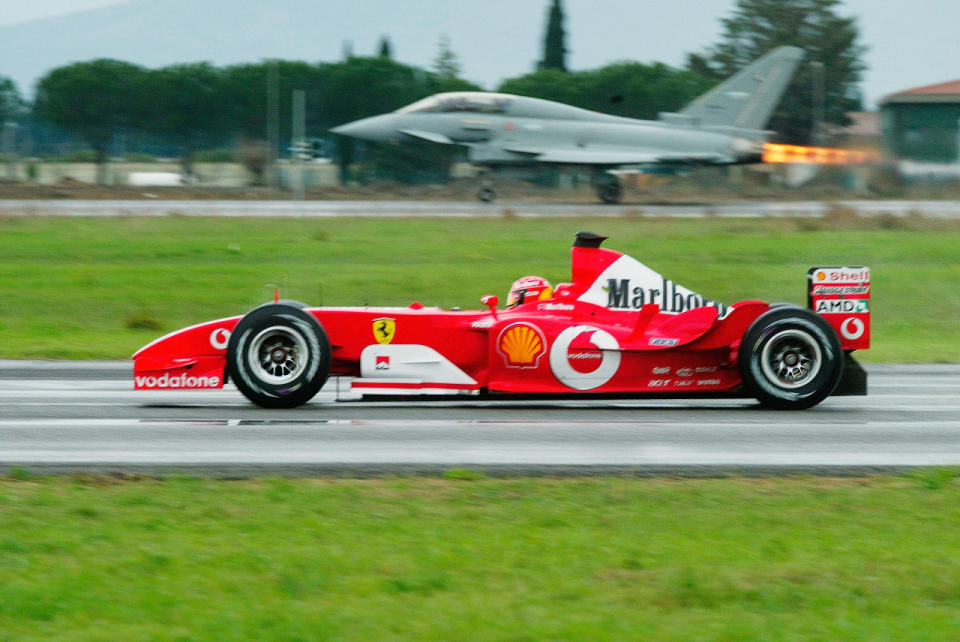
Between them, the front and rear wings provide half of a car’s total aerodynamic downforce, the remainder coming largely from the underfloor and the diffuser.
But brute downforce is only part of the picture. Modern front wings sculpt the air they pass through, directing it over, around and through the car for maximum benefit.
Their complexity reflects their importance and, by one back-of-an-envelope calculation from the team at TotalSim, between 5 and 10million man hours have been spent on developing F1 front wings. If you work eight hours a day and have to put in 10million hours, it will take you about 3,500 years (allowing for loo breaks but not holidays).
At their simplest, F1 wings work on the same principles as aircraft wings, only in the opposite direction. The shape of an F1 wing creates lower pressure underneath than above, forcing the wing – and the car – down on to the track surface.
But it has not always been this way. Here are some key breakthroughs in wing use that have helped – literally – shape F1.
Of rocket cars and rotor blades
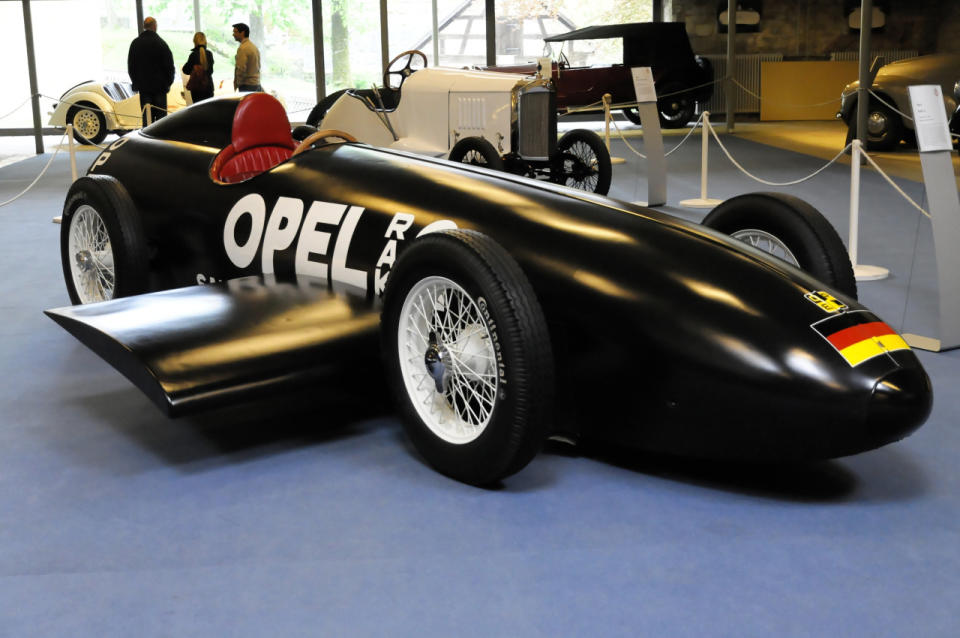
Prior to 1968, F1 cars were wingless beasts, designed to go fast on the long straights that were a feature of so many older circuits, but extremely limited when it came to cornering.
That’s not to say wings had never been tried on cars. As far back as 1927, Opel built a rocket car – yes, powered by 24 rockets – called the RAK-2 (pictured). This 143mph missile had wings mounted midway along its body to help keep it on the ground, and make it look even more eye-catching.
Fast-forward to 1956, when a young Swiss engineer called Michael (or Michel) May turned up to a Nürburgring sportscar race with a bizarre-looking Porsche 550 Spyder.
He and his brother Pierre had mounted a huge wing where the Porsche’s A-pillars would normally be. This cumbersome device stretched back over the driver’s head, and could be adjusted with a rudimentary lever.
The car provoked more mirth than admiration – much more mirth – until it recorded the fourth-fastest time in practice. This production-model 550 was giving works teams a run for their money, and Michael May was lapping faster than Fangio.
The official Porsche team protested that the device was unsafe, that it obscured the vision of following drivers, and May’s marvellous wing vanished from motorsport. Years would pass before wings reappeared, in the US, on the revolutionary Chaparral Can-Am cars.
The big breakthrough that would lead to wings returning to F1 may have come in 1967, when F1 legend Jim Clark drove a Vollstedt IndyCar equipped with modest wings. He was dumbfounded by the cornering and stability of this car, which he said could be ‘…driven faster than was thought capable by a mortal man’.
Clark asked his mechanics to fashion a rear wing from a helicopter rotor blade. This wing never saw action and Clark was killed in an F2 race soon after. But, at the 1968 Monaco Grand Prix, Clark’s Lotus team-mate Graham Hill drove a 49B car with stumpy aerofoils at the front and a modest rear spoiler.
Other teams took note and, by the time of the next F1 race, at Spa-Francorchamps in Belgium, several cars had sprouted experimental wings.
One of those teams was Ferrari who had, on their engineering team, one Michael May – the very same man whose Porsche wing had been banned all those years ago.
Understanding airflow
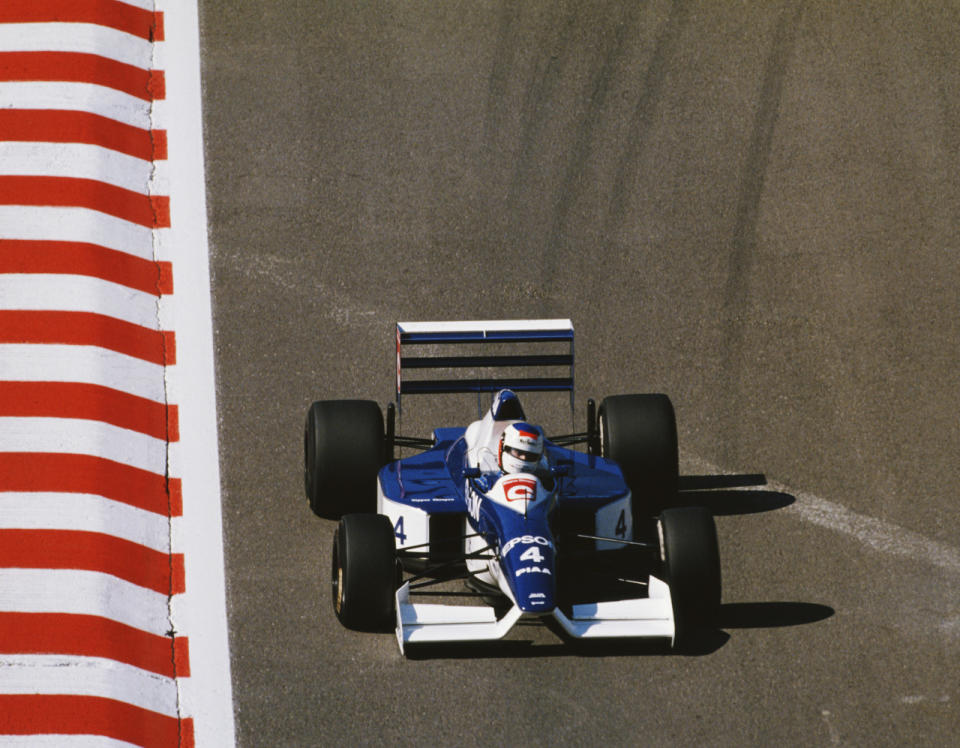
The history of F1 wings is a history of continuous development, with tweaks appearing at every race and wings evolving according to changing regulations as well as exceptional engineering.
But, very occasionally, a genuinely revolutionary wing is designed.
One such wing appeared in 1990, on the Tyrrell 019 (pictured), and it was the brainchild of Technical Director Dr Harvey Postlethwaite and Aerodynamicist Jean Claude Migeot.
To understand their work, it’s necessary to know that, the faster air flows relative to its surroundings, the less pressure it exerts. This is Bernoulli’s Principle and it’s one of the keys to grasping F1 aerodynamics.
Postlethwaite and Migeot realised that the F1 front wings and low nose-cones of their time were diverting air sideways and up, dramatically reducing the amount of air passing under the car.
They reasoned that, if they could force more air to travel under the car, it would have to travel faster than air passing over and around the car and Bernoulli’s Principle would ensure this faster air exerted lower pressure than the air above – in other words, they would create additional downforce.
Postlethwaite decided that the simplest way to get more air under the car was to raise the nose. Unfortunately, that would mean raising the front wing as well, and these wings work best when they are as close to the ground as possible.
The solution? The Tyrrell 019 was unveiled at the 1990 Italian Grand Prix, sporting a unique ‘inverted V’ nose and wing.
This anhedral (pointing down) design caused some bemusement, with some commentators describing it as a joke.
But it worked, in fact it worked brilliantly. Though the Tyrrell 019 was not a particularly successful car, Postlethwaite and Migeot’s approach to controlling airflow changed F1’s approach to aerodynamics.
A decade later, former F1 driver Martin Brundle drove an 019 to compare it with newer F1 machinery.
His verdict? The Tyrrell had better grip and better balance than its modern counterparts. And was a whole lot more fun in slow corners.
When wings work too well

Rear wings create a lot of additional drag – that’s the price for all that extra downforce helping you corner at high speed.
But on straight sections of track, this is a nuisance, as it slows the car substantially.
How much slower? Well, when drivers use their DRS (Drag Reduction System) by opening a flap on the rear wing, the reduction in drag can help increase their top speed by up to 8mph, so the difference is none too shabby.
Not surprisingly, teams have gone to great lengths to find ways of reducing drag when the car is on a straight – here are three of the most inventive methods.
1: Flexible wings
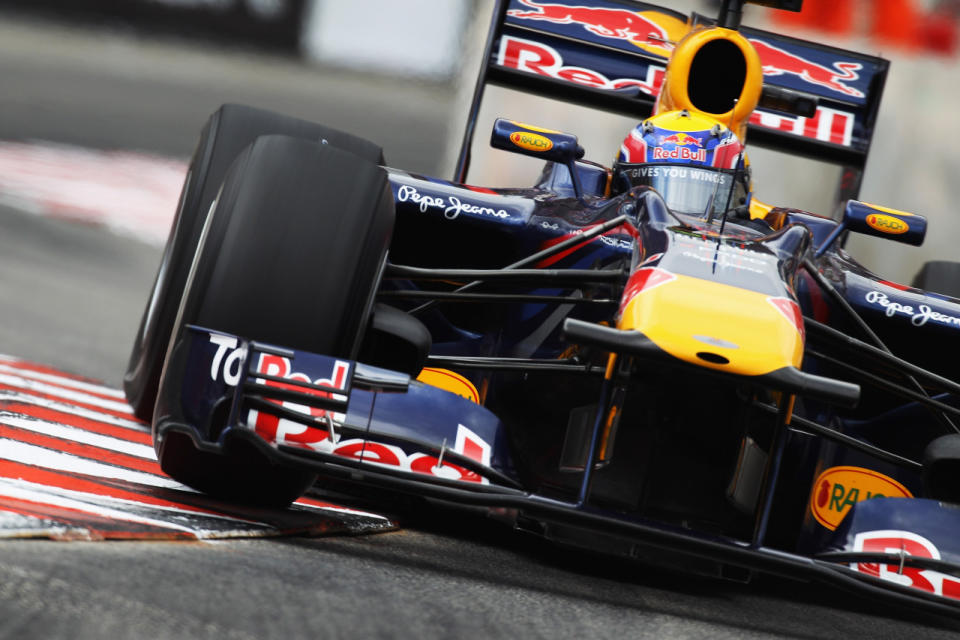
One of the most common ways of cutting drag and/or adjusting the car’s aero balance has been to build car parts that flex under high aerodynamic pressure –in other words, they bend a little when the car is travelling at high speed.
This ‘aero-elastic’ approach can both improve wing performance (flexing front wings appeared to be helping Red Bull and Ferrari generate more downforce from their 2010 cars) and degrade wing performance (in 2006, teams were told to fit separators between the two elements of their rear wings to stop the top one flexing down, closing the ‘slot gap’ and stalling the wing, dramatically reducing drag).
The thing is, so many parts of an F1 car flex that there’s always another controversy just around the corner. Talking of which…
2: Tilting sections
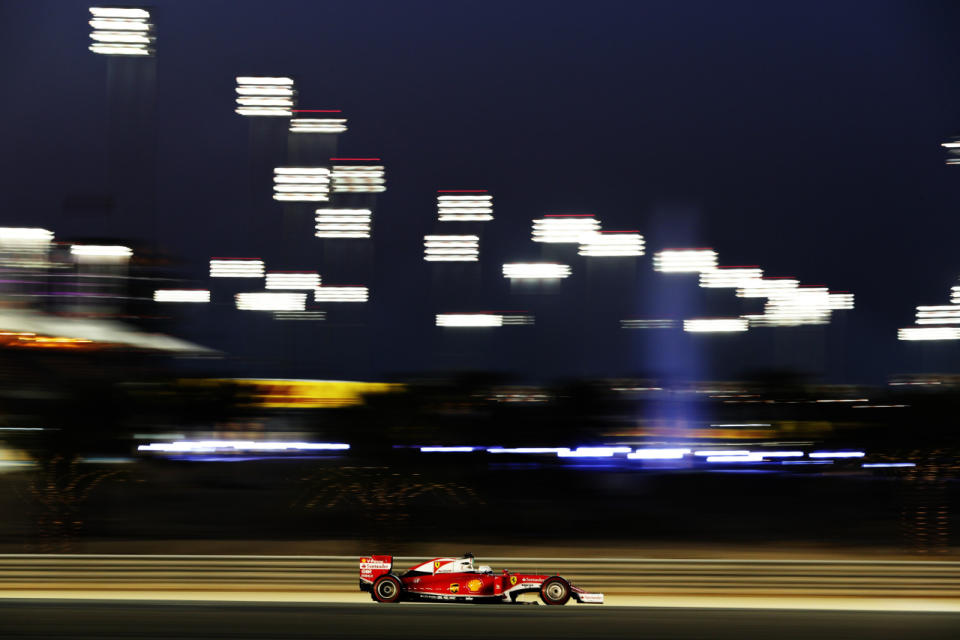
Earlier this season, camera footage showed Sebastian Vettel’s Ferrari behaving in a peculiar way at high speed, with the rear wing structure, mounting pylon and ‘monkey seat’ assembly rotating backwards.
It is estimated that a three-degree deflection such as this could reduce drag sufficiently to increase top speed by 1.5mph.
Red Bull was also suspected of running a front wing that behaved in a similar way, with the footplate and endplate elements being completely separate from the flap sections.
The FIA has a battery of deflection tests to stop teams breaking the rules, but it’s the job of F1 engineers to build cars that stretch these rules to the max – whether that is in the spirit of the regulations or not.
3: The F-Duct
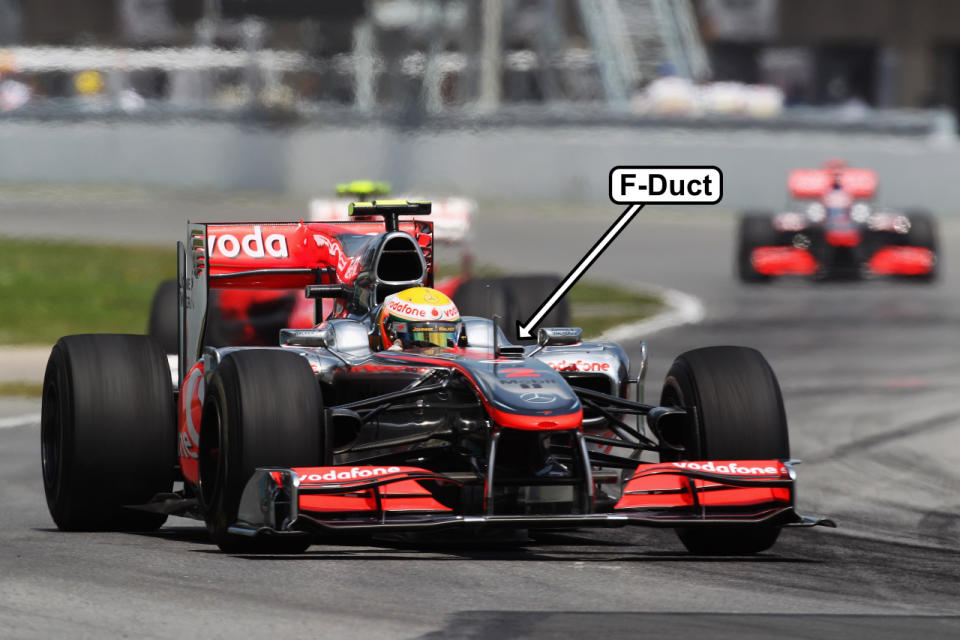
We know from wind tunnel experiments that stalling a rear wing can raise a car’s top speed by up to 3mph. We also know that doing this by allowing the wing sections to flex is illegal.
And F1 cars are not allowed to have any moveable body parts (present-day DRS rules excepted).
In 2010, McLaren came up with a cunning way of disrupting the airflow over the rear wing, which puzzled and then infuriated their competitors.
It was called the F-Duct, because of a little air scoop that was positioned on the left of the car, next to the ‘f’ of the Vodafone sponsor logo.
This was little more than a pipe that funnelled air to the back of the MP4-25 car but the clever bit was inside the cockpit.
There was a hole in the pipe which was normally uncovered, allowing air from the F-Duct to escape. But, on long straights, when a driver’s left leg was normally resting, that leg could be used to cover the hole in the pipe.
Air from the duct was now channelled to the rear of the car, disrupting airflow over the wing and cutting drag. Hey presto, extra speed.
Other teams struggled to catch up but, because the pipework had to be designed into cars, they were at a huge disadvantage.
In the end, F-Ducts were banned the following year and another clever and simple bit of F1 engineering bit the dust.
Such is F1, a sport in which engineers and rule-makers are in permanent combat.

 Yahoo Sport
Yahoo Sport 





































